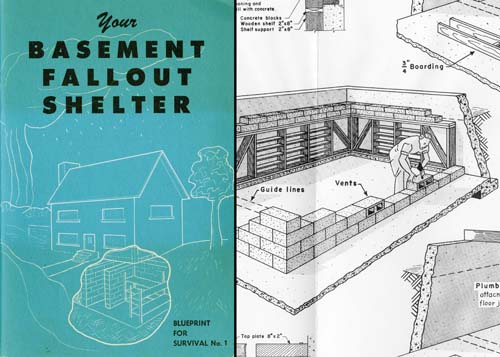

There were even radiation detectors, known as Geiger counters available for sale. The tube captured radioactivity in the air, and could then be read by a separate base unit to determine the level of exposure of radioactive fallout. The pocket dosimeter was a radiation detection device that included a pen-like tube that could be worn on clothing. There were devices to help people know when radioativity had reached safe levels. Several Nebraska publications recommended stocking foods that would last for several months without refrigeration and that required little or no cooking. The shelter’s entrance was constructed with a sharp turn to reduce radiation intensity. An open doorway and vents near the floor provided ventilation. In the 50s and 60s, fears of nuclear war spurred a boom in building fallout shelters - right in your own basement or under the back yard.Ī fallout shelter built in the corner of a basement was the least expensive type, and it supposedly offered "substantial protection." In many plans, concrete blocks provided the walls. Find out from your local Civil Defense office. Know in advance what to do in any emergency situation. If there’s no fallout shelter within range, go to the nearest large building and take shelter in the basement or one of the inner hallways. Then, go to the nearest fallout shelter before radioactive fallout starts drifting down. Stay there until heat and blast waves have passed. Curl up in a ball, and cover your head with your arms. Get into the nearest building immediately or into a ditch or culvert, beneath a parked car, behind a tree or wall, anything solid that will give you some measure of protection. Even miles away you may be exposed within seconds to a searing heat wave from the explosion, followed by a blast wave and flying debris.

But if you’re caught in the open, and there’s a brilliant nuclear flash in the distance, take cover immediately. If you receive warning of an enemy attack get to the nearest fallout shelter promptly. This is basic civil defense information from the Department of Defense, Office of Civil Defense, Washington.


 0 kommentar(er)
0 kommentar(er)
